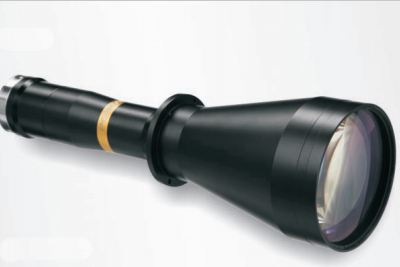Ten parameters of telecentric lens to choose
Telecentric lens is a high-end optical lens designed to correct the parallax of traditional lenses. It has the absolute advantage of magnification, distortion, parallax, resolution, etc., compared to conventional lenses. Let's talk about telecentric lens selection of the top ten parameters.

Parameter one: Telecentricity
Telecentricity refers to the object's magnification error. The smaller the magnification error, the higher the telecentricity. Distinction has a variety of different uses, in the lens before use, to grasp the telecentricity is very important. Telecentric lens of the main light with the optical axis of the lens parallel to the telecentricity is not good, the use of telecentric lens is not good; telecentricity can be simple to confirm the following figure.
Parameter two: resolution (μm)
Optical system scale, said the black and white grid pattern observed through the lens, 1mm can be observed in the black and white stripes to find the largest number of pairs. The resolution is the nearest distance measurement that can be approached between two points before they are unrecognizable. For example, a resolution of 1 μm means that the nearest distance that can be approached between two points before being recognized is 1 μm.
Parameter three: resolution (Lines / mm)
Separation refers to the black and white lines within the image of the lens 1mm area, the number of black and white stripes can be identified. Resolution in units of lines / mm, for example, 100 lines / mm represents the black and white spacing can be identified 1 / 100mm (10μm). Black and white lines width of 1 / 200mm (5μm).
Parameter four: distortion (%)
Distortion is a straight object outside the optical axis, showing the lens aberration curve. Lens distortion, also known as lens distortion, is a general term for the inherent distortion of optical lenses, which can be classified as pincushion distortion and barrel distortion. Pincushion Distortion, a distortion of outward expansion, Barrel Distortion.
Parameter five: depth of field
Depth is the same as when the object moves back and forth from the best focus. The distance between the nearest point and the farthest point where the sharpest focus appears. The depth range on the object side is called depth of field. Also, the camera-side range is called the depth of focus. Specific depth of field values slightly different. Depth of Field can be calculated using the following formula:
Depth of Field = 2 x Permissible COC x Effective F / Optical 2 = Allowable Error / (NA x Optical Magnification) (0.04 mm Permissible COC used)
Parameter six: depth of focus
Depth is the distance between the nearest point and the farthest point where the sharpest focus appears when the CCD moves back and forth from the best focus. The depth of field on the image side is called depth of focus.
Parameter seven: optical magnification
Magnification refers to the lens can be adjusted to change the size of the original imaging area of the subject. Optical magnification is through the optical zoom lens magnification. The main point and the relationship between imaging: Magnification refers to the size of the image and the object ratio.
Parameter eight: resolution
It shows that we can see the 2-point interval of 0.61x using the wavelength (λ) / NA = resolution (μ), the above calculation method can theoretically calculate the resolution, but does not include distortion. ※ Use wavelength is 550nm.
Parameter nine: edge brightness
Relative illumination refers to the central illumination and the surrounding illumination as a percentage.
Parameter ten: zoom lens
Variable focal length lens, magnification, camera range, etc. can be simply changed. Suitable for situations where you need to find the most suitable shooting conditions (shooting distance, focal length of the lens) for easy operation. A zoom lens called a zoom lens that does not generate a focus position shift and that generates a focal position shift is called.
After we know these parameters, we can no longer understand those parameters. The lens selection of machine vision project is better understood.